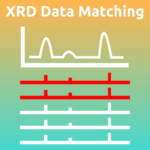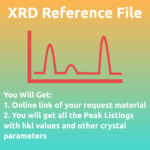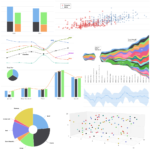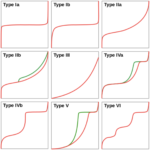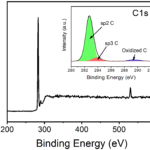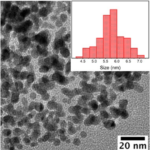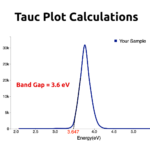UV Vis Spectroscopy Nanomaterials Database Table with Search
Cite This in Your Publication
UV Vis Spectroscopy Nanomaterials Database Table with Search - InstaNANO. https://instanano.com/all/characterization/uv-vis/uv-vis-spectroscopy-nanomaterials-database-table-with-search/ (accessed August 15th, 2025).
UV Vis Spectroscopy Nanomaterials Database Table with Search - InstaNANO. https://instanano.com/all/characterization/uv-vis/uv-vis-spectroscopy-nanomaterials-database-table-with-search/ (accessed August 15th, 2025).
Search by λmax (nm)
Search by Material
Search by Characteristic
| λmax (nm) | Material | Characteristic | Description/Notes |
|---|---|---|---|
| 215–230 | Graphene Oxide (GO) | π–π* transition | Deep UV region; aromatic C=C domains |
| 260–290 | Reduced Graphene Oxide (rGO), Graphene | π–π* transition | Restored conjugation shifts absorption |
| 260–275 | Graphene Oxide (GO) | n–π* transition | Due to C=O functional groups |
| 275–300 | Copper(II) Oxide (CuO) Nanoparticles | Band gap absorption | Broad edge, size-dependent |
| 310–335 | Zinc Oxide (ZnO) Nanoparticles | Band gap absorption | UV edge, quantum size effect observable |
| 315–325 | Nickel Oxide (NiO) Nanoparticles | Band gap absorption | UV absorption onset for NiO nanoparticles |
| 330–350 | Iron Oxide (Fe3O4) Nanoparticles | Fe–O charge transfer | Mixed valence; broad visible region |
| 350–380 | Silicon Dioxide (SiO2) Nanoparticles | Band gap absorption | Transparent above 380 nm |
| 360–375 | Nickel Hydroxide (Ni(OH)2) Nanoparticles | d–d transition | Characteristic absorption band |
| 380–420 | Titanium Dioxide (TiO2) Nanoparticles | Band gap absorption | Anatase: 380–400 nm, Rutile: 400–420 nm |
| 390–430 | Silver (Ag) Nanoparticles | LSPR (plasmon resonance) | Peak varies with diameter, shape, and environment |
| 440–470 | Copper(I) Oxide (Cu2O) Nanoparticles | Band gap absorption | Characteristic of cuprous oxide nanostructures |
| 480–520 | Cadmium Sulfide (CdS) Quantum Dots | Band gap absorption | Quantum size tunable, smaller dots blue-shifted |
| 510–580 | Gold (Au) Nanoparticles | LSPR (plasmon resonance) | Peak near 520–530 nm (small), red-shifts with size/aggregation |
| 530–600 | Cadmium Selenide (CdSe) Quantum Dots | Band gap absorption | Highly size-dependent; visible emission |
| 570–630 | Copper (Cu) Nanoparticles | LSPR (plasmon resonance) | Peak broadens with oxidation or larger size |
| 600–670 | Cadmium Telluride (CdTe) Quantum Dots | Band gap absorption | Quantum confined; tunable visible/NIR emission |
| 640–690 | Lead Sulfide (PbS) Quantum Dots | Band gap absorption | NIR region, tunable with size |
| 180–210 | Nickel (Ni) Nanoparticles | Band gap absorption | Weak, deep UV region |
| 220–250 | Aluminum Oxide (Al2O3) Nanoparticles | Band gap absorption | Transparent in visible, cut-off in deep UV |
| 300–350 | Indium Tin Oxide (ITO) Nanoparticles | Band gap absorption | UV to blue region; transparent in visible |
| 320–380 | Tin Oxide (SnO2) Nanoparticles | Band gap absorption | Transparent in visible, sharp UV edge |
| 280–350 | Cerium Oxide (CeO2) Nanoparticles | Band gap and f–f transition | Visible yellow color due to oxygen vacancies |
| 360–420 | Zirconium Oxide (ZrO2) Nanoparticles | Band gap absorption | Wide gap, UV absorption |
| 480–560 | Palladium (Pd) Nanoparticles | LSPR (plasmon resonance) | Broad, weak plasmon band in visible region |
| 300–340 | Platinum (Pt) Nanoparticles | Interband transition | Weak, featureless, UV-visible absorption |

